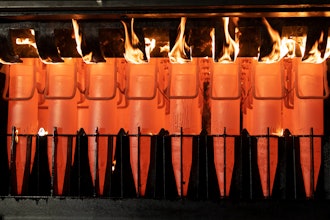
Increasing production rates. Optimizing equipment performance. Integrating new technologies within legacy systems. Enhancing the functionality of products through customization. These are just a few things that industrial distributors and value-added resellers (VARs) have in mind when they run their businesses.
New technological advancements and an increasing need for companies to perform in an agile marketplace have forced industrial distributors and VARs to innovate constantly.
Businesses are relying on automation to run their industrial facilities, and an increased demand for hyper-specialized business application technologies has created this need for innovation that will only intensify as the Internet of Things and other advancements continue to evolve.
Hayes Drumwright, the founder and CEO of VAR Trace 3, told Forbes at the beginning of this revolution that “The Traditional VAR is dead,” and that while converging infrastructure at that time was a temporary solution, hybrid and the public cloud would be the next steps. Fortunately, these developments have come to pass, and are good news for VARs and industrial distributors due to an increasingly popular government incentive.
The Research and Development (R&D) Tax Credit has become one of the most valuable provisions of the tax code for American businesses of all sizes, and has the potential to put money back into a business whose daily activities include developing unique and innovative solutions for their clients.
Over the years, the credit has evolved for the benefit of U.S. businesses, with the most recent changes coming as a result of the passage of the Tax Cuts and Jobs Act.
Businesses working in the manufacturing industry shouldn’t turn a blind eye to this tax saving opportunity – particularly with this legislation expanding individual AMT relief and eliminating the corporate AMT – changes that will greatly impact the number of businesses able to benefit from this incentive.
Although a typical reaction to tax code requirements is to back away in fear, the good news is the work that ultimately leads to businesses being able to claim the credit doesn’t need to be incredibly complex in nature.
Here are some common activities that have qualified both VARs and industrial distributors in the past:
- Optimizing and maintaining equipment through performance engineering and systems integration
- Providing products and services to clients that either increase production rates, reduce waste or improve quality
- Designing and implementing control panels or turnkey product solutions to clients
- Providing management software for in-house tracking, ordering and supply chain
It’s easy to see that the expenses paid by VARs and industrial distributors that can be put right back into their business through the R&D credit stem from activities that aren’t just done on a daily basis, but embody the nature of these businesses purpose.
These companies are committed to improving both industrial processes and infrastructure—the types of innovation that are exactly what the credit was designed to reward. One project that led to a generous credit result came when a VAR that designed and developed a custom valve automating system for monitoring a facility’s valve positions was able to claim thousands in credits.
Another example includes an industrial controls and value-added reseller that received more than $747,000 in federal credits for three years’ worth of qualifying projects. For one industrial distributor, $641,000 in federal R&D tax credits was the reward for four years’ worth of projects.
These credits can then be used by VAR and industrial distribution companies to put money back into their businesses and garner a competitive edge against others in their field. While innovation is the name of the game for these businesses, it takes money to develop, test and integrate the solutions that clients are asking for.
VARs and industrial distributors are problem-solvers that utilize trial and error in order to make a product better or enhance particular processes to improve the bottom line, and taking advantage of the R&D Credit will only help further that mission.
Tracy Lustyan is the Managing Director for the Great Lakes Region and is based in alliantgroup’s Chicago office. Her focus is on clients in the Midwest, primarily in Illinois, Missouri, Minnesota and Iowa. Tracy has worked with over 225 CPA firms and helped identify over $380 million in tax credits and incentives for over 900 businesses.
Courtney Childers is a Senior Associate in alliantgroup’s Houston office and serves as a lead consultant on many R&D studies. Childers has identified an estimated $100 million in federal and state R&D tax credits for clients in the manufacturing and value added resellers space. She also serves as one of alliantgroup’s subject matter expert in the manufacturing industry focusing on CNC programming, new or improved product development, systems integration and ISO process improvements.






















